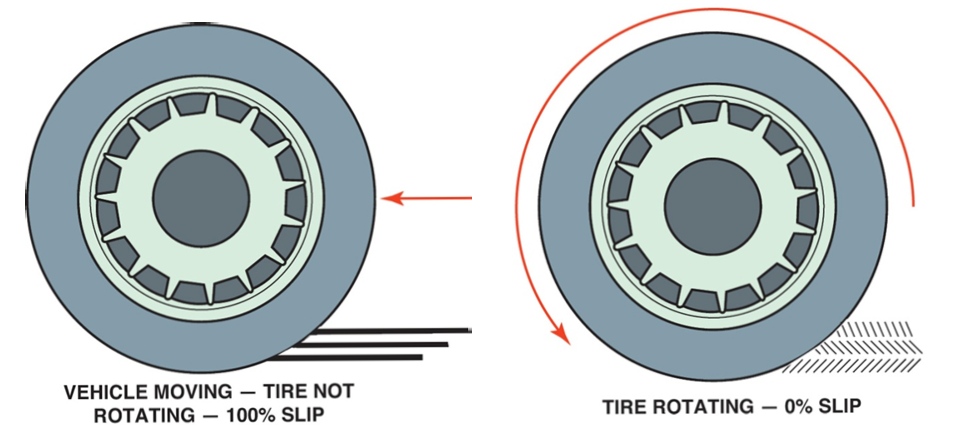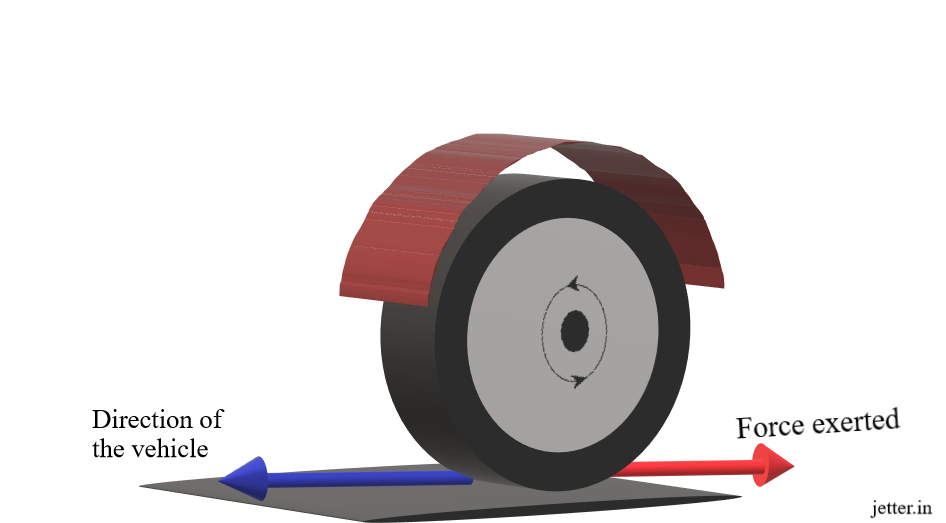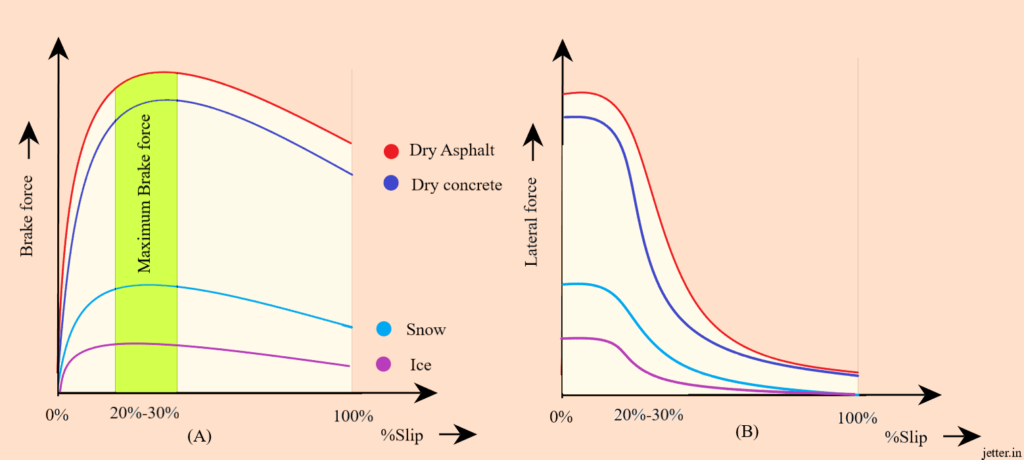Wheel lockup is one of the major reasons for deadly accidents. This is more severe on slippery conditions like snow. Wheel lockup is the condition where the wheel is not spinning. This happens due to hard braking.In other words, the wheel is slipping/skidding on the road. If you understand wheel lockup, understanding ABS is very easy.

Why Wheel Lockup causes accidents?
Physics helps us here. The wheels are the ones that brings the work done by the engine to the road. As the wheel rolls forwards, it exerts a force opposite to the direction of motion of the vehicle (Newton’s third law). Therefore, when we steer, this component of force changes its direction in the front (equal to the angle of turn of the wheel) hence, the vehicle is guided along this direction.
Image shows how the force acts against the vehicle direction complying with Newton’s third law. Now imagine a condition where are cruising at high speeds and you floor the brake pedal suddenly. This makes the wheel to stop spinning completely (100% Slip condition). But as your vehicle has a higher momentum (high speed), it won`t stop for some time and any steering input during this period is absolutely useless as the force which pushes the vehicle forwards do not change it`s angle resulting in catastrophe.

Anti Lock Braking System (ABS)
Since we have defined the problem statement, we shall look into the solution. ABS help the driver to overcome this problem. The detailed working of ABS is covered here: ABS – Working . ABS get information of wheel lockup in its sensors and if it senses a wheel lockup (Slip), it applies and releases pressure to the brake fluids in a high frequency pulses meaning, it makes the brake shoe or drum to apply and release the brakes at high frequency. This eliminates wheel lockup and provides steerability even at harder braking conditions. The driver can feel the kickback in the brake pedal if the ABS kicked in.
ABS and stopping distance
This is a tricky section as you search in the internet you may get confusing answers. But ABS and stopping distance have no big relation at all and it was not designed for reducing the stopping distance.
Note here, the optimum value of slip is 20%. It is this value where you will get maximum braking force and hence less stopping distance. Therefore, with or without ABS, whichever system attains closer value to the best slip value, it stops at a lower distance as more breaking force leads to lesser stopping distances. ABS perform well in snow conditions as traditional braking system without ABS would have more slip in these conditions as the road is highly slippery and ABS maintains the slip value much better hence stopping before. The plot would help us understand better

It is evident from the plot that no matter if the ABS kicked in or not, if and only if the slip value is somewhere within the green band, stopping force is more leading to better stopping distances. The plot B is where ABS plays its role, as seen, the lateral force which is very much important and denotes how well one can steer the vehicle is at its best at lower slip conditions. ABS`s main role lies here in providing better lateral force by reducing the slip.
Now we have an answer for the question why ABS? therefore it is now very easy to understand how manufacturers implement them in their vehicles. Stay tuned as the next article is about that.
